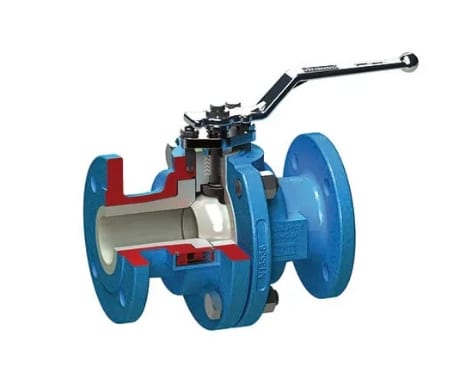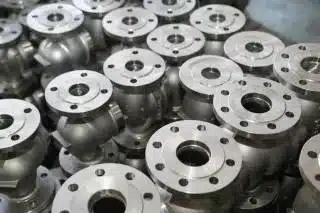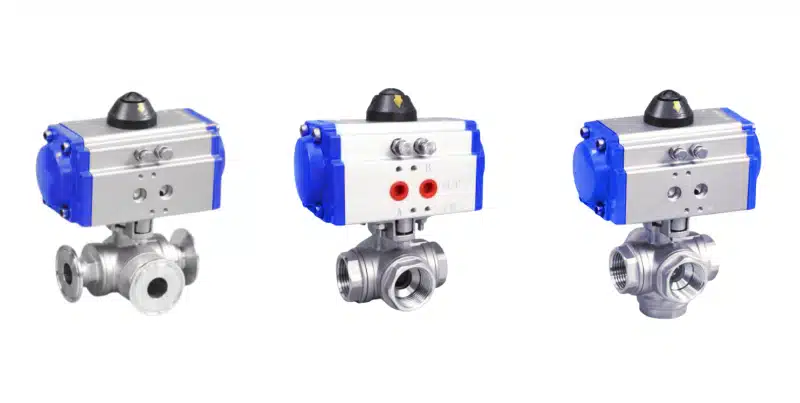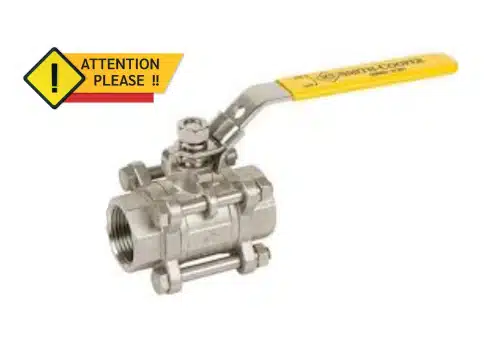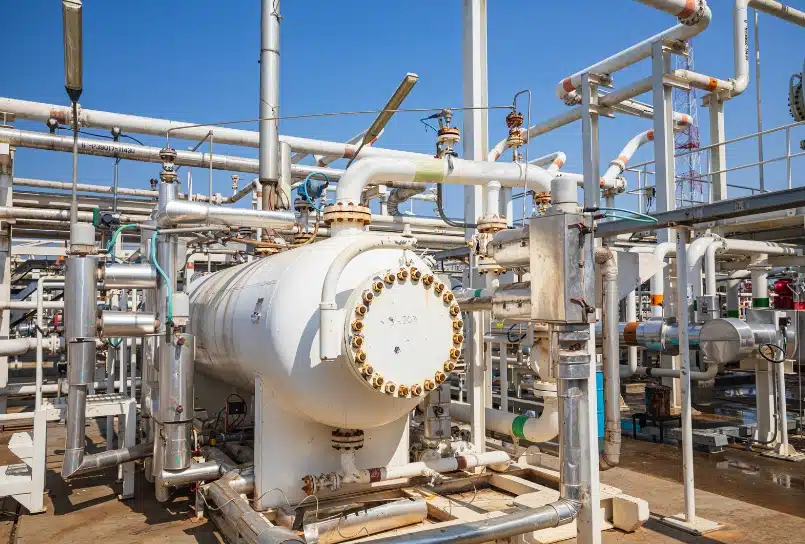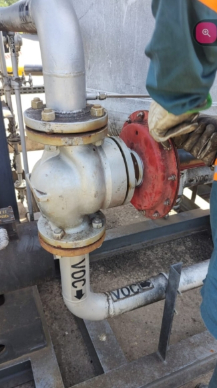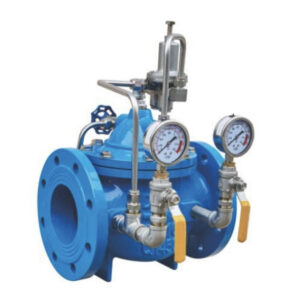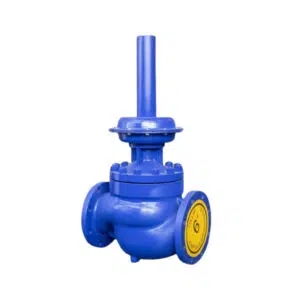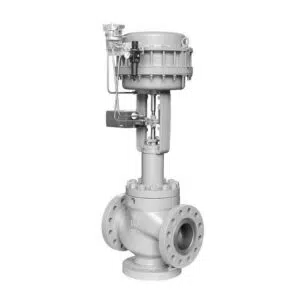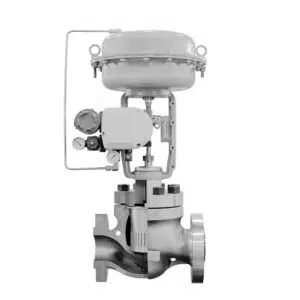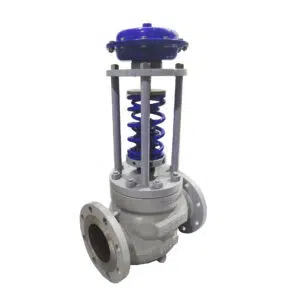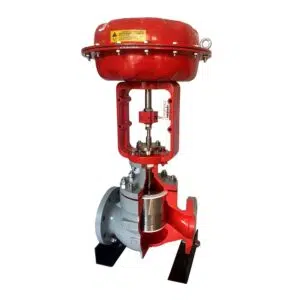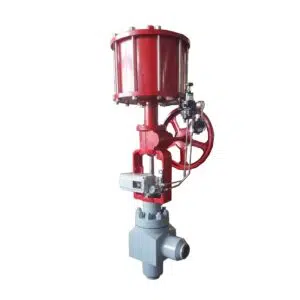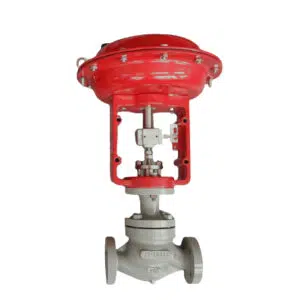Every food and beverage production line is fitted with a large number of sanitary valves, depending on the size of the system, hundreds, or even thousands of valves can be found in a matrix piped fluid conveying line. Valves fulfill many functions in the production line: closing and opening paths, switching, controlling, preventing excessive or insufficient pressure, and preventing incompatible media from mixing with each other at intersections in the pipeline.
The quality of the valves has an important influence on the quality of the production process and therefore on the product itself.
In the food industry, where it must be ensured that only valves that meet strict hygiene requirements are used, hygiene defects caused by poor valve design must be minimized.
Hygienic defects caused by poor valve design in the food industry, where it must be ensured that only valves with strict hygienic requirements are used, must be considered a production risk.

Objective and Scope
This document is to be used for all valves used in contact with food or food products that are handled hygienically or aseptically.
The objective of this guidance is to clearly discuss the minimum hygienic requirements for valves. In this way, any uncertainty about the hygienic performance of the actual design should be eliminated.
Definitions
The list of health-specific definitions was submitted by EHEDG. The full list of definitions is attached to this article.
Valve Hygiene Grade General Requirements
1. Cleanability
All surfaces in contact with the product must be inert and washable, with special attention to valve seats and seals. with special attention to valve seats and seals.
2. Surface
Surface roughness has a significant effect on cleanability. The higher the surface roughness, the longer it takes to clean. The higher the surface roughness, the longer the cleaning time. In principle, product contact surfaces should be treated so that the finish Ra ≤ 0.8 μm. Rougher surfaces are acceptable if hygienic properties are not jeopardized, but deviations from surface roughness must be clearly indicated (e.g., the surface is not as rough as it should be). roughness must be clearly indicated (e.g. in the beverage industry, a surface roughness Ra = 1.6 μm (e.g. in the beverage industry, a surface roughness of Ra = 1.6 μm is usually acceptable).
3. Materials
Materials including those used for static and dynamic sealing of the valve, must be suitable for the intended application. application. Special requirements are to be determined by the Design Principles Group (Ref. 1).
4. Geometry
The valve must be designed to ensure fluid exchange in all areas in contact with the product. In addition to liquid exchange during production and cleaning production and during cleaning, it must also be ensured that no air pockets remain in the valve when liquid flows through (Figures 1 to 3). in the valve when liquid flows through (Figures 1 to 3). Thus, within the product we should avoid to happened the following details:
4.1 Grooves, cracks and fissures must always be avoided.
4.2 Sharp edges should be avoided.
4.3 Avoid using thread connection.
4.4 Empty ends shall be avoided. If they are unavoidable, they shall be made as short as possible, in a voidable position and washable. If cleanability is dependent on a particular procedure (i.e., the direction of flow during CIP).

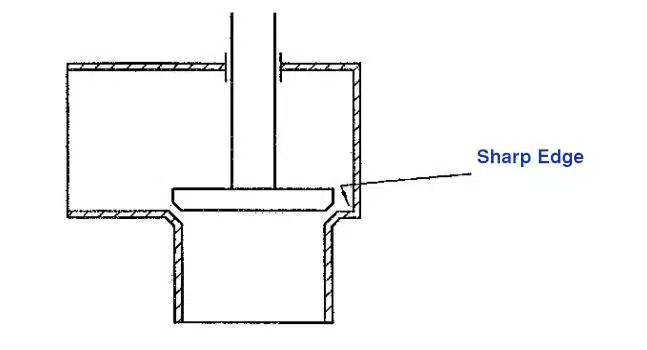

5. Voidability
When removal is not necessary, it is possible to completely empty the valve in at least one installation position (Fig. 4).
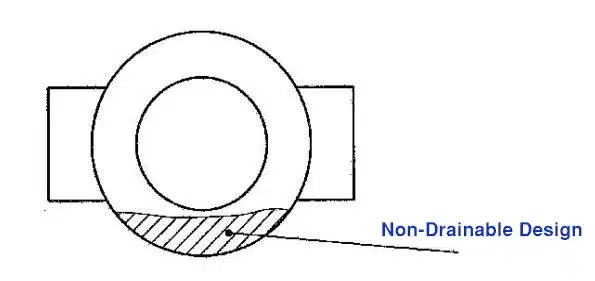
6. Seals
The number of seals in the valve should be as small as possible. We should ensure that the deformation characteristics of the sealing material must be kept under control in all conditions. Too low a deformation of the seal is as bad as too high a deformation. The seals should be properly supported and should protrude into the fluid area as little as possible, and it should not inhibit drainage. The material must comply with the relevant regulations (Figure 5 and Figure 6).


The following factors should be considered:
- Elastomer is incompressible (about 20% deformation)
- Compression limited by metal stop
- The thermal expansion of rubber is 5 times that of stainless steel
- Contact pressure at the lowest temperature
- Radial alignment
7. Springs
We should avoid spring touching the medium in the processing. Where springs come into touch with the medium, there should be as minimum surface as possible. It must be described how to ensure that all contaminated surfaces can be cleaned.
8. Leak detection
Sanitary valves should be designed to provide quick external detection of internal leaks. In addition, must avoid the transfer of fluid from the actuator to the product area.
9. External surfaces
The external surfaces of the sanitary valve should be easy to clean.
10. Availability of documentation
The sanitary valve manufacturer should be responsible to provide comprehensive information and advice on the installation, operation, cleaning, and maintenance.
11. Impermeability to Microorganisms
For aseptic applications, the dynamic sealing of the moving shaft in contact with the product must incorporate a barrier between the environment and the product to prevent the entry of microorganisms. Dual seals should be designed so that the distance between the two seals is greater than the shaft stroke. so that the distance between the two seals is greater than the stroke of the shaft. If this is not the case, it must demonstrate its ability to prevent the entry of microorganisms. To render all product contact surfaces and all surfaces between the two seals free from relevant microorganisms must be possible. all surfaces between the two seals free from relevant microorganisms must be possible. For aseptic applications, the moving shaft in the valve must be better separated from the product contact side by means of a diaphragm or telescopic tube (Figures 7 to 9).
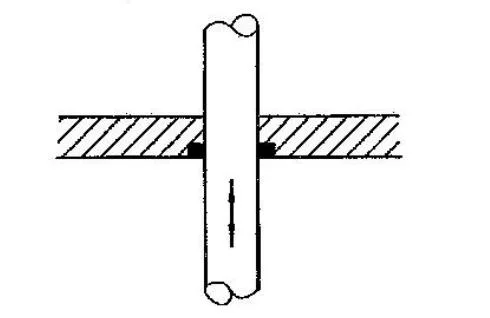
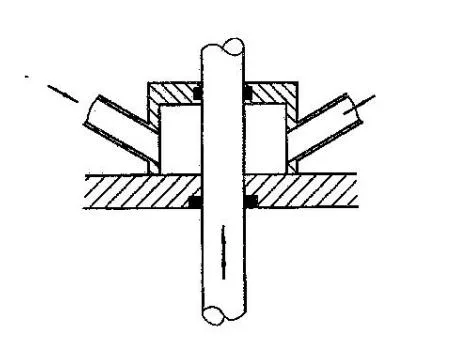
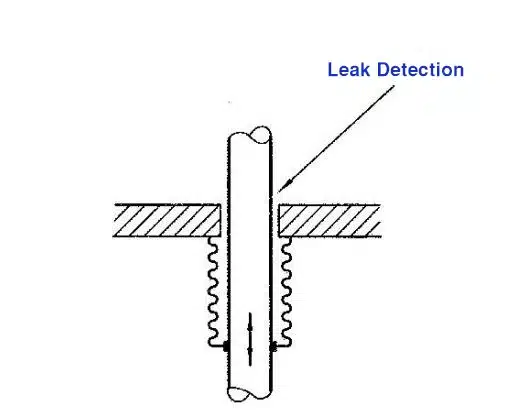
Additional Requirements for Special Sanitary Valves
For other special sanitary valves with more stringent requirements, the different valve types are described with additional requirements as follows.
Diaphragm Sanitary Valves and Bellows Valves
Leakage capacity shall be detectable through a free outlet to the atmosphere or through a special leak detection system. (Figure 9)

Plug valve
Plug valves are not suitable for cleaning in place, so the instruction manual for use must clearly state that removal for cleaning is necessary. Assuming that they are free of relevant microorganisms after refilling, plug valves can only be considered for sanitary fittings class II.
Pressure reducing valves
PRV valves must be self-venting to the outlet side to avoid an accumulation of product residues (Figure 10). If the valve is activated during operation, a device must be provided to the pressure reducing valve to make CIP of the seat and outlet side possible.

Ball Valves
The area between the ball, the valve shell and the seat face must be cleanable. Conventional ball valves are not designed for CIP (Figure 11). If designed for CIP, the area between the ball, shell, and seat surfaces must be fully integrated into the CIP flow (FIG . 12).
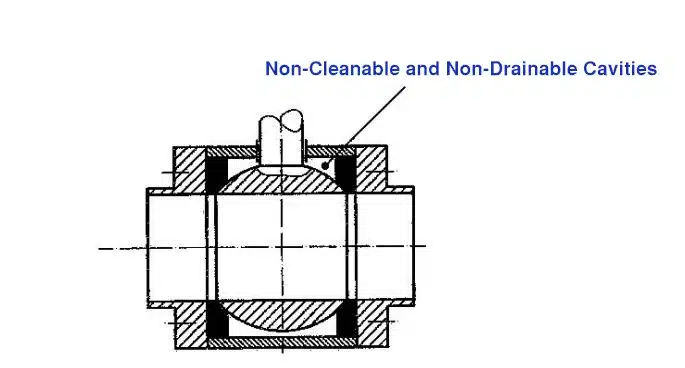

Mixproof valves
An mixproof valve is defined as a valve that safely excludes the intermixing of incompatible fluids between separate product lines by forming a neutral zone between the product lines (Figure 13). The neutral zone must be voidable to air, cleanable, and designed so that leakage cannot lead to pressure buildup.
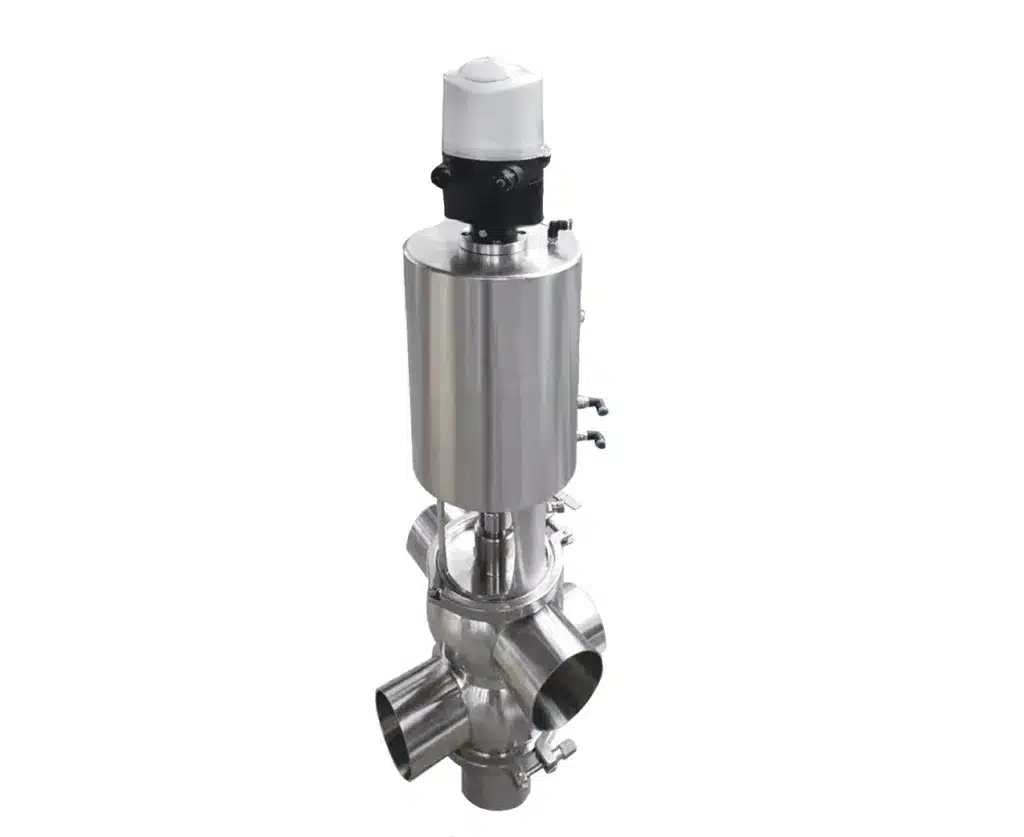
A specific design must be selected that addresses the health and safety requirements of the application. For aseptic applications, the neutral zone must be flushed with an antimicrobial barrier medium in addition to the vapor seal barrier.
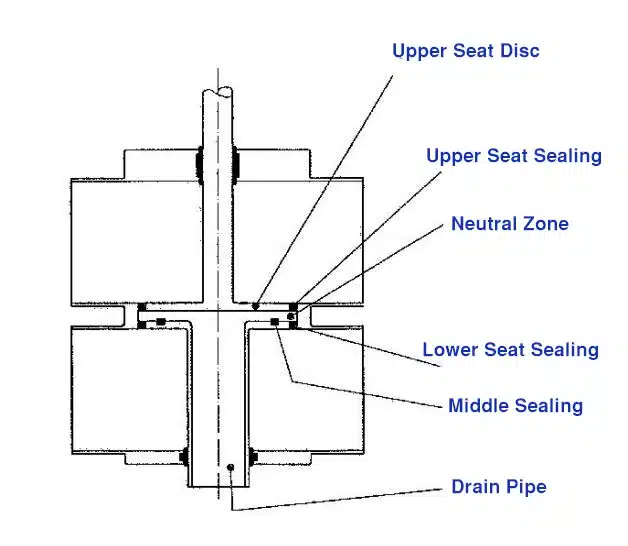
Conclusion
As with other equipment used for the hygienic processing of food, valves should be designed in accordance with the standards for the design of hygienic equipment (Ref. 1) and meet the technical requirements “Hygienic design of closed equipment for liquid food production”. Therefore, sanitary valves designed and manufactured in compliance with the above requirements are suitable for hygienic processing of food, and suitable for aseptic processing of food if it is impervious to bacteria.



